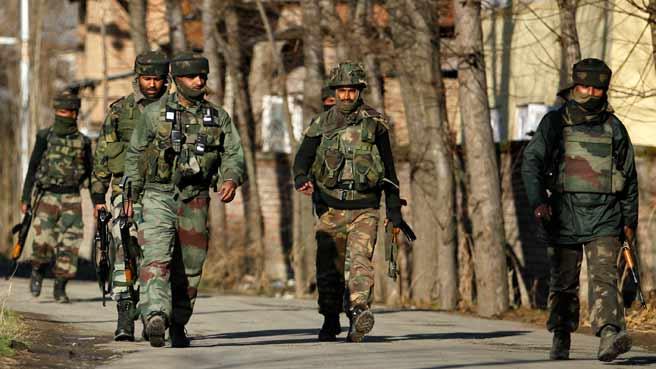July 13, 2013
The challenge facing the army is how to thwart trained and heavily-armed guerrillas from entering the state

July 13, 2013
The challenge facing the army is how to thwart trained and heavily-armed guerrillas from entering the state

Srinagar: "We have learnt our lessons from this incident," a three-star general said on the sidelines of a recent passing out parade here. He was commenting on the deadly guerrilla ambush late last month in which eight soldiers were killed and 13 injured in this Jammu and Kashmir summer capital.
As infiltration attempts from across the Line of Control (LOC) into the state record an increase, the challenges for the army to keep the trained and heavily-armed guerrillas from entering the state have also grown.
On July 9, the army foiled a major infiltration bid into the Valley in north Kashmir's Kupwara district. A group of eight to nine guerrillas tried to sneak in from across the LOC in the Keran sector when they were fired upon by army troops.
In the resultant gunfight, the army said five guerrillas had been killed while others in the group had fled towards the LOC, taking cover in the thick foliage in the area.
'Surveillance of a border like the LOC is no mean job. There are mountains, rivers, streams, ridges, ravines and gorges along the LOC. It is not a cut and dried area that we have to guard. Despite the three-tier LOC fencing, we need highly sophisticated surveillance equipment to keep the enemy at bay,' a senior army officer said here.
To mount vigil and meet the growing challenges of LOC infiltration by highly motivated guerrillas, the army's Northern Command has floated a request for proposal (RfP) for purchasing six border surveillance management systems (BSMS) for deployment in Jammu and Kashmir.
The BSMS would provide inputs to the surveillance centre that is normally situated behind the observation posts on the LOC.
The border in Jammu and Kashmir is at present managed through a surveillance system that includes three-tier fencing, thermal imaging, manual patrolling and floodlighting the area.
The BSMS, army sources say, would enhance its counter-infiltration surveillance capabilities.
Sources in the state intelligence say that out of a group of five to ten guerrillas who attempt to infiltrate and are challenged by the security forces, despite suffering casualties, a small number of survivors generally manages to sneak in.
'This seems to be the general experience here during the last over 20 years. The few survivors manage to get into the hinterland despite the majority of their group getting killed or being forced to withdraw,' said a senior intelligence officer here who did not want to be named.
Guarding against any major revival of guerrilla activities has been the first priority of the security forces.
What was last year described as 'residual militancy' by some optimists seems far from over, given the increase in guerrilla activities in recent months.
Chief Minister Omar Abdullah last month voiced concern over what he called 'the joining of militant ranks by some highly-educated Kashmiri youth'.
While the installation of sophisticated surveillance equipment like the BSMS is an operational requirement for the army doing a tough job in Jammu and Kashmir, global experience has shown that no surveillance mechanism is better than human intelligence on the ground.
Courtesy: IANS







































































































